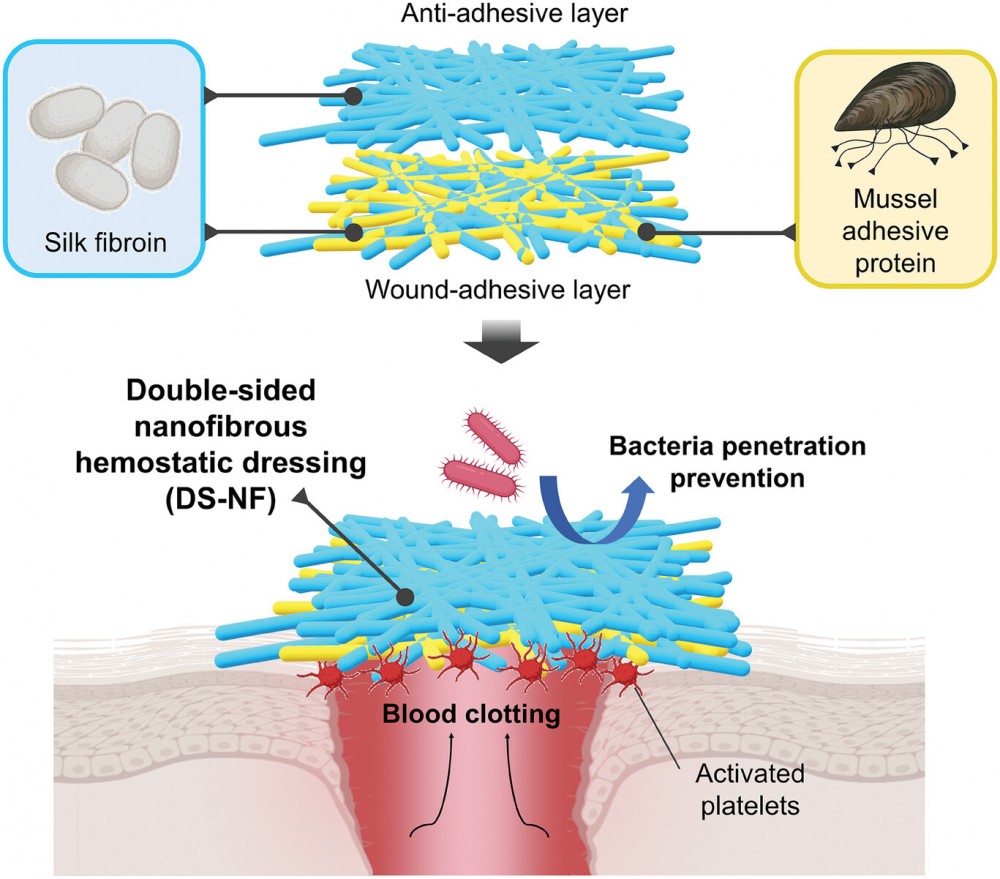
연구
Research Outcome
미래를 창조하는 포스텍 화학공학과
Protective Topical Dual-Sided Nanofibrous Hemostatic Dressing Using Mussel and Silk Proteins with Multifunctionality of Hemostasis and Anti-Bacterial Infiltration
- Title of paper
- Protective Topical Dual-Sided Nanofibrous Hemostatic Dressing Using Mussel and Silk Proteins with Multifunctionality of Hemostasis and Anti-Bacterial Infiltration
- Author
- [차형준교수 연구실] 단백질 생체소재 기반 다기능 흡수성 나노섬유 지혈제
- Publication in journal
- Small, Volume20, Issue18 May 2, 2024 2308833
- Publication date
- 20240107
Abstract
Topical hemostatic agents are preferred for application to sensitive bleeding sites because of their immediate locoregional effects with less tissue damage. However, the majority of commercial hemostatic agents fail to provide stable tissue adhesion to bleeding wounds or act as physical barriers against contaminants. Hence, it has become necessary to investigate biologically favorable materials that can be applied and left within the body post-surgery. In this study, a dual-sided nanofibrous dressing for topical hemostasis is electrospun using a combination of two protein materials: bioengineered mussel adhesive protein (MAP) and silk fibroin (SF). The wound-adhesive inner layer is fabricated using dihydroxyphenylalanine (DOPA)-containing MAP, which promotes blood clotting by aggregation of hemocytes and activation of platelets. The anti-adhesive outer layer is composed of alcohol-treated hydrophobic SF, which has excellent spinnability and mechanical strength for fabrication. Because both proteins are fully biodegradable in vivo and biocompatible, the dressing would be suitable to be left in the body. Through in vivo evaluation using a rat liver damage model, significantly reduced clotting time and blood loss are confirmed, successfully demonstrating that the proposed dual-sided nanofibrous dressing has the right properties and characteristics as a topical hemostatic agent having dual functionality of hemostasis and physical protection.
LINK: https://onlinelibrary.wiley.com/doi/10.1002/smll.202308833




